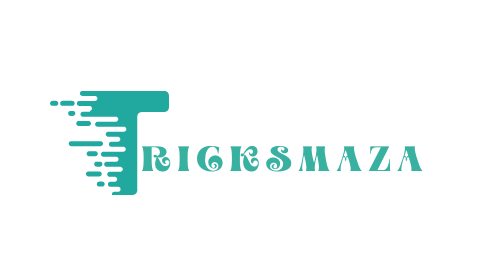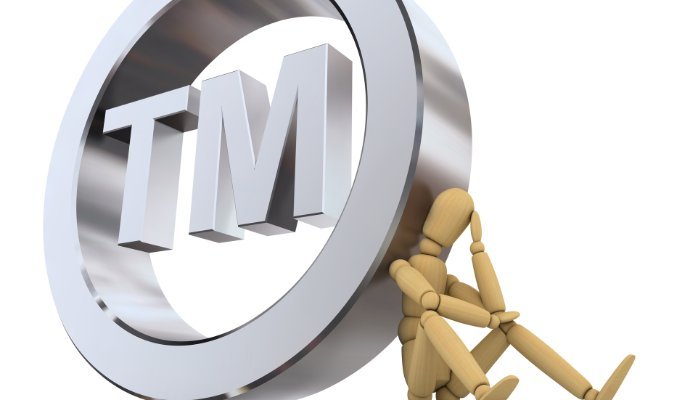In the competitive world of business, protecting your brand is paramount. Trademarks play a crucial role in this protection by safeguarding your brand’s identity against unauthorized use. However, registering a trademark is only the beginning. Ongoing trademark monitoring is essential to ensure that your trademark rights are not infringed upon. This article will delve into the importance of trademark monitoring and provide detailed strategies for conducting it effectively.
Why Trademark Monitoring is Essential
Protecting Brand Integrity
Your trademark represents your brand’s identity, reputation, and the quality of your products or services. Unauthorized use of your trademark by others can dilute your brand’s value and confuse consumers, leading to a loss of trust and revenue. Monitoring your trademark helps you identify and address potential infringements before they cause significant damage.
Preventing Market Confusion
When other businesses use similar trademarks, it can lead to consumer confusion. Customers may mistakenly associate inferior products or services with your brand, negatively impacting your reputation. By monitoring your trademark, you can ensure that your brand remains distinct and that consumers can easily identify your products or services.
Enforcing Legal Rights
A registered trademark grants you the exclusive right to use that mark in connection with your goods or services. However, to maintain these rights, you must actively enforce them. Trademark monitoring allows you to identify and take action against infringers, demonstrating to the market and legal authorities that you are committed to protecting your trademark rights.
Avoiding Trademark Dilution
Trademark dilution occurs when the distinctiveness of your trademark is weakened due to widespread unauthorized use. This can reduce the trademark’s value and its ability to serve as a unique identifier for your brand. Regular monitoring helps you detect and prevent dilution by identifying and addressing unauthorized uses promptly.
Legal Obligations
In some jurisdictions, trademark owners are required to actively monitor and enforce their trademarks to maintain their legal rights. Failing to do so can result in the loss of trademark protection. Monitoring ensures that you fulfill these legal obligations and safeguard your trademark from potential cancellation or non-renewal.
Key Components of Effective Trademark Monitoring
Comprehensive Search
Effective trademark monitoring begins with a comprehensive search to identify potential infringements. This involves searching various sources, including trademark registries, domain names, social media platforms, and online marketplaces. A thorough search helps you uncover unauthorized uses of your trademark and similar marks that could cause confusion.
Monitoring New Trademark Applications
One of the most critical aspects of how much does it cost to trademark a name in tennessee monitoring is keeping an eye on new trademark applications. Competitors or other businesses may attempt to register trademarks that are similar to yours. Monitoring trademark applications allows you to file oppositions or objections to prevent these registrations from being approved.
Watching Competitors
Competitor monitoring is essential to stay informed about their trademark activities. By tracking competitors’ trademark filings and usage, you can identify potential threats and take proactive measures to protect your brand. This also helps you stay ahead of market trends and adapt your strategies accordingly.
Monitoring Online Marketplaces and Social Media
The rise of e-commerce and social media has created new avenues for trademark infringement. Regularly monitoring online marketplaces and social media platforms helps you detect unauthorized uses of your trademark in product listings, advertisements, and user-generated content. This allows you to take swift action to remove infringing content and maintain your brand’s integrity.
Domain Name Monitoring
Domain names that include your trademark or similar variations can cause confusion and divert traffic from your website. Monitoring domain name registrations helps you identify and address potential infringements, ensuring that your online presence remains protected.
Geographical Scope
Trademark monitoring should extend beyond your home country to cover regions where you conduct business or plan to expand. International monitoring is essential to protect your brand in the global market and prevent unauthorized use in different jurisdictions.
Tools and Services for Trademark Monitoring
Trademark Watch Services
Trademark watch services are specialized providers that offer comprehensive monitoring solutions. These services use advanced algorithms and databases to track trademark applications, domain names, online marketplaces, and social media platforms for potential infringements. Partnering with a reputable trademark watch service can save time and resources while ensuring thorough monitoring.
Government Databases
Many countries provide access to their trademark databases, allowing you to conduct your own searches and monitor new applications. The United States Patent and Trademark Office (USPTO) and the European Union Intellectual Property Office (EUIPO) are examples of organizations that offer searchable trademark databases.
Online Tools and Software
Various online tools and software are available to assist with trademark monitoring. These tools often provide customizable alerts, search functionalities, and reporting features. Examples include Markify, TrademarkNow, and Corsearch. These tools can be particularly useful for small businesses and startups with limited resources.
Legal and Professional Services
Hiring a trademark attorney or intellectual property professional can provide expert guidance and support for trademark monitoring. These professionals have the knowledge and experience to conduct thorough searches, interpret search results, and take appropriate legal action against infringers. They can also help you navigate the complexities of international trademark monitoring.
Steps to Conduct Effective Trademark Monitoring
Step 1: Identify Key Elements to Monitor
Begin by identifying the key elements of your brand that need monitoring. This includes your primary trademark, logos, slogans, and any variations or translations. Consider the geographical regions and industry sectors where you operate, as this will influence the scope of your monitoring efforts.
Step 2: Set Up Alerts and Notifications
Utilize trademark watch services, online tools, and government databases to set up alerts and notifications. These alerts will notify you of new trademark applications, domain name registrations, and potential infringements. Customize the alerts to cover relevant keywords, industries, and geographical regions.
Step 3: Conduct Regular Searches
Perform regular searches on trademark databases, online marketplaces, social media platforms, and domain name registries. This helps you identify new and ongoing infringements. Document and track the search results for future reference and legal action.
Step 4: Analyze and Prioritize Infringements
Not all potential infringements require immediate action. Analyze and prioritize the identified infringements based on their impact on your brand, likelihood of confusion, and legal implications. Focus on the most critical threats to ensure efficient use of resources.
Step 5: Take Appropriate Action
When you identify a significant infringement, take appropriate action to protect your trademark. This may include sending cease-and-desist letters, filing trademark oppositions or objections, and pursuing legal action if necessary. Consult with a trademark attorney to determine the best course of action.
Step 6: Maintain Documentation
Keep detailed records of your monitoring activities, search results, and actions taken against infringers. This documentation is essential for demonstrating your commitment to protecting your trademark rights and can be valuable evidence in legal proceedings.
Step 7: Review and Adjust Monitoring Strategies
Regularly review and adjust your monitoring strategies to ensure they remain effective. Stay informed about changes in trademark laws, market trends, and industry practices. Adapt your monitoring efforts to address new challenges and opportunities.
Challenges in Trademark Monitoring
High Volume of Data
Monitoring trademarks involves analyzing a large volume of data from various sources. Managing and interpreting this data can be challenging, especially for businesses with limited resources. Utilizing automated tools and professional services can help streamline the process and improve efficiency.
Identifying Similar Marks
Trademark monitoring requires identifying similar marks that could cause confusion. This involves analyzing visual, phonetic, and conceptual similarities. Trademarks can be represented in various forms, making it difficult to detect all potential infringements. Advanced algorithms and expert analysis are essential to accurately identify similar marks.
International Monitoring
Trademark laws and practices vary across countries, making international monitoring complex. Different languages, scripts, and cultural contexts can also complicate the process. Partnering with international trademark watch services and professionals can help navigate these challenges and ensure comprehensive monitoring.
Enforcement and Legal Action
Taking legal action against infringers can be time-consuming and costly. It requires a thorough understanding of trademark laws and procedures. Businesses must weigh the potential benefits and risks of pursuing legal action. Consulting with trademark attorneys can provide valuable guidance and support in making these decisions.
Best Practices for Trademark Monitoring
Proactive Monitoring
Adopt a proactive approach to trademark monitoring. Regularly search for potential infringements and address them promptly. Early detection and action can prevent significant damage to your brand and avoid lengthy legal battles.
Comprehensive Coverage
Ensure comprehensive coverage by monitoring various sources, including trademark registries, domain names, online marketplaces, and social media platforms. Consider international monitoring to protect your brand in global markets.
Customizable Alerts
Set up customizable alerts to receive notifications of new trademark applications and potential infringements. Tailor the alerts to cover relevant keywords, industries, and geographical regions.
Professional Assistance
Consider hiring trademark watch services and intellectual property professionals to assist with monitoring. These experts have the tools and knowledge to conduct thorough searches and provide valuable insights.
Regular Reviews
Regularly review and adjust your monitoring strategies to ensure they remain effective. Stay informed about changes in trademark laws, market trends, and industry practices. Adapt your monitoring efforts to address new challenges and opportunities.
Conclusion
Trademark monitoring is a crucial aspect of protecting your brand’s identity and maintaining your trademark rights. By actively monitoring for potential infringements, you can prevent market confusion, enforce your legal rights, and avoid trademark dilution. Utilizing a combination of trademark watch services, online tools, and professional assistance can enhance the effectiveness of your monitoring efforts.
Adopting a proactive approach, ensuring comprehensive coverage, setting up customizable alerts, and seeking professional assistance are best practices for effective trademark monitoring. Regularly reviewing and adjusting your strategies will help you stay ahead of new challenges and opportunities. Protecting your brand through diligent trademark monitoring is an ongoing commitment that pays off in the long run by ensuring the integrity and value of your trademark.



More Stories
Dental CRM: Building Strong, Lasting Patient Relationships.
How Shopify Themes Influence Store Speed
Best Practices Fantasy Sports App Development